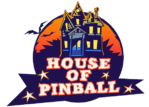If you’re passionate about pinball machines, you already know how intricate and exciting these games can be. Behind the flashing lights and thrilling gameplay lies a complex network of electronics, with the circuit boards acting as the brain of the machine. Understanding how these boards work — and what can go wrong — is essential for maintaining your pinball machine’s performance and value.
At House of Pinball, we want to empower our customers to make informed decisions when buying or maintaining their machines. Whether you’re exploring pinball machines for sale or troubleshooting your current setup, this guide will help you grasp the fundamentals of pinball machine circuit boards and common issues to watch for.
What Are Pinball Machine Circuit Boards?
Circuit boards, also called PCBs (Printed Circuit Boards), are electronic components that control various functions of a pinball machine, including:
- Game logic and rules (processing player inputs and scoring)
- Sound and music playback
- Lighting control
- Mechanical actions like flippers, bumpers, and kickers
- Display functions (scoreboards, dot matrix displays)
Modern machines typically have several circuit boards working together: a main CPU board, driver boards for switches and solenoids, sound boards, and sometimes specialized displays.
Common Pinball Machine Circuit Board Issues
Even with high-quality manufacturing, circuit boards can experience problems over time. Here are some of the most frequent issues and what causes them:
1. Power Supply Failures
The circuit boards depend on stable and correct voltage levels. Faulty power supplies or bad connections can cause boards to malfunction, freeze, or fail to power up.
Symptoms: Machine won’t start, intermittent resets, flickering lights.
Fix: Test power supply voltages, check wiring, and replace faulty power components.
2. Burnt or Damaged Components
Capacitors, resistors, diodes, and transistors on the boards can degrade or burn out due to age, overheating, or power surges.
Symptoms: Specific game functions fail (e.g., no sound, stuck flippers), error codes.
Fix: Visual inspection can reveal burnt parts; replacements may require soldering skills or professional repair.
3. Cold or Broken Solder Joints
Over time, solder joints can crack or become “cold,” causing poor electrical connections and erratic behavior.
Symptoms: Random resets, certain features not working consistently.
Fix: Reflow or resolder affected joints, especially on boards prone to vibration.
4. Connector & Ribbon Cable Issues
Many boards are connected via ribbon cables or multi-pin connectors. These can become loose, corroded, or damaged.
Symptoms: Partial game failures, displays not working, sound missing.
Fix: Carefully reseat or clean connectors; replace damaged cables.
5. Corrosion and Moisture Damage
Exposure to humidity or spills can corrode board traces and components, leading to shorts or open circuits.
Symptoms: Machine powers on but malfunctions; visible corrosion or residue on boards.
Fix: Clean boards with isopropyl alcohol and brush; replace severely damaged boards.
6. Firmware and Software Glitches
Modern pinball machines run on software stored on circuit boards. Sometimes software bugs or corrupt firmware can cause errors.
Symptoms: Game crashes, error messages, odd behavior.
Fix: Firmware updates or reloading software images can resolve issues.

How to Diagnose Circuit Board Problems
- Start with basics: Ensure proper power and wiring are intact.
- Visual inspection: Look for burnt components, corrosion, and loose connections.
- Use a multimeter: Check voltages and continuity on board traces and connectors.
- Swap boards: If possible, test with known-good boards to isolate the faulty one.
- Consult manuals: Manufacturer troubleshooting guides often list error codes and test points.
When to Call in a Professional
While some basic troubleshooting can be done at home, complex circuit board repairs often require:
- Expertise in electronics and soldering
- Access to replacement parts or donor boards
- Firmware reprogramming tools
At House of Pinball, we offer expert repair services and can help source authentic parts to keep your machine running like new.
Buying a Pinball Machine? Why Circuit Board Condition Matters
If you’re looking to buy a pinball machine for sale, especially used or vintage models, assessing the condition of the circuit boards is crucial. Boards in poor shape can be costly and complicated to fix, and may cause frustration.
Tips for buyers:
- Ask the seller about the machine’s electronics history and repairs.
- Request photos or videos of the boards.
- Buy from reputable dealers like House of Pinball, who test and refurbish machines.
- Consider warranty or service support when purchasing.
Why Choose House of Pinball?
We’re not just a retailer — we’re your trusted partner in the pinball community. When you buy from us, you get:
- Thoroughly inspected and serviced machines
- Clear information about machine condition, including electronics
- Expert advice on maintenance and repairs
- Access to parts and support when you need it
Ready to find your perfect pinball machine? Check out our pinball machines for sale and experience the difference.
Final Thoughts
Pinball machine circuit boards are complex but fascinating components that bring your game to life. Knowing what can go wrong and how to spot problems can save you time, money, and headaches.
If you’re serious about pinball, trust the experts at House of Pinball for quality machines and expert guidance every step of the way.
Explore our collection and buy your next pinball machine with confidence!
👉 Browse Pinball Machines for Sale

![Understanding Pinball Machine Circuit Boards (What Can Go Wrong) Pinball Machines For Sale | The Ultimate Buyer's Guide [2024]](https://i0.wp.com/houseofpinballs.com/wp-content/uploads/2025/12/Metallica-PRO-pinball6.jpg?fit=651%2C869&ssl=1)